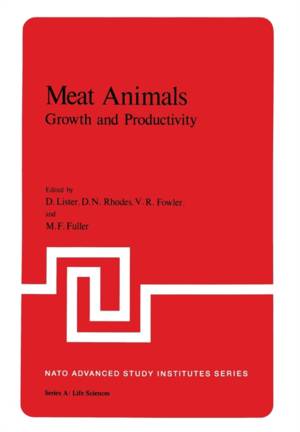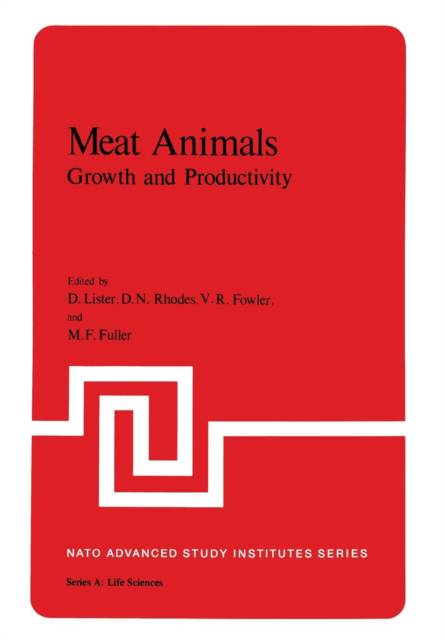
- Afhalen na 1 uur in een winkel met voorraad
- Gratis thuislevering in België vanaf € 30
- Ruim aanbod met 7 miljoen producten
- Afhalen na 1 uur in een winkel met voorraad
- Gratis thuislevering in België vanaf € 30
- Ruim aanbod met 7 miljoen producten
Zoeken
€ 106,95
+ 213 punten
Omschrijving
Dramatic shortfalls in crop production in various regions of the world have led some people to question the relatively inefficient use of cereal grains for feeding meat animals instead of their direct use for human food. There is no doubt, however, that meat offers a nutritionally valuable, attractive and widely accepted food, the world demand for which increases daily. Thus it is not enough simply to condemn the consumption of meat as an irresponsible extravagance; rather it is preferable to examine how the demand for meat can be met most efficiently and effectively, which requires a fundamental enquiry into how meat is 'grown'. The importance of fat, for instance, both to the growing animal and to the consumer, needs to be established in view of the 'expense' involved in its deposition by the animal and the extent to which it is discarded at many points in the chain from the slaughterhouse to the consumer. We were aware that there existed a wealth of information on the physiology of growth which, because of its having been collected as part of investigations in many other disciplines and the inevitable communication gap, had not been incorporated into the science of animal production. Similarly there were principles and teChniques of animal husbandry which, if known in other disciplines, might enable more pertinent questions to be asked. The biochemical and physiological pathways by which animals utilise feed to produce body protein, fat and other components are intriguing problems which are receiving considerable attention.
Specificaties
Betrokkenen
- Uitgeverij:
Inhoud
- Aantal bladzijden:
- 541
- Taal:
- Engels
- Reeks:
- Reeksnummer:
- nr. 7
Eigenschappen
- Productcode (EAN):
- 9781461589051
- Verschijningsdatum:
- 12/12/2012
- Uitvoering:
- Paperback
- Formaat:
- Trade paperback (VS)
- Afmetingen:
- 170 mm x 244 mm
- Gewicht:
- 875 g

Alleen bij Standaard Boekhandel
+ 213 punten op je klantenkaart van Standaard Boekhandel
Beoordelingen
We publiceren alleen reviews die voldoen aan de voorwaarden voor reviews. Bekijk onze voorwaarden voor reviews.







